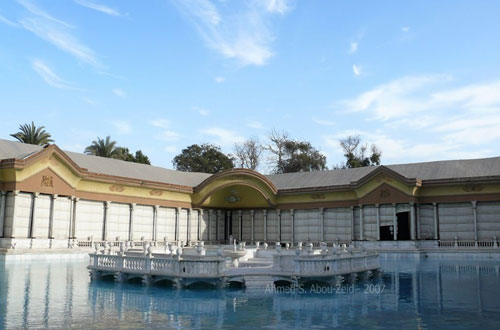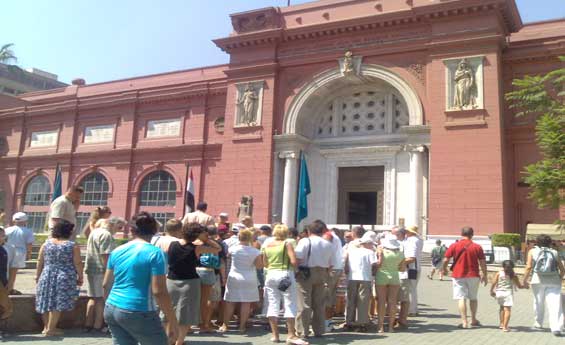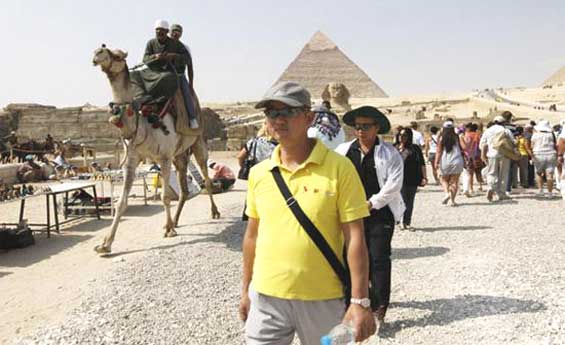The Palace of Muhammad Ali located in Cairo at Shubra El-khima district next to the Faculty of Agriculture, The palace was established by Mohammed Ali in the early years of assuming the power but its construction was completed many years later and was the first building to be built in that agricultural area on the Nile River.
After that, this area was occupied with a lot of luxury decorated and gracefully designed palaces established by the prominent noblemen at that time including the palace of Qasr El-Nil, Qasr El-Dubara and other Palaces which has been disappeared.
The palace of Mohammad Ali or Shubra Palace is characterized by its design of decoration that mixed between the Islamic design of decoration and the European design. It was mainly built as a residence for the members of the royal family and the foreign ambassadors. This palace is regarded as one of the earliest buildings to be illuminated by the electric lightening system that was newly discovered and used in Egypt.
The Construction of the palace made the architect choose the style of garden palaces, a style that was imported from Ottomans Empire, especially from the palaces erected on the shores of the Bosporus Strait and the Marmara Sea in the land of the Ottomans. Architectural characteristics of this palace were called hans or saraya in the Turkish language or kiosks in the English language, a word which was originally imported from the Latin language.
The palace originally involving thirteen buildings, Only three buildings remain at the site: “The Gabalaia Kiosk”, which was used as a separate reception area for guests; “The Fountain Kiosk” – AlSaqia – which was also used for receptions as well as a festival area, and the water wheel building with its garden that was provided with a collection of rare plants, some of them still exist and it is regarded as Plants museum currently.
The Pavilions :
Gallery six meters wide and supported by marble columns encloses a huge marble basin. Various fountains enhance the basin with water, four lions spout a cascade of water from each corner and twenty-four crocodiles support the octagonal platform in the middle, with its own splashing fountain. The basin is only a little over a meter deep, but it is wide enough for several boats, the platform provided a stage for dancers and musicians. At the corners of the pavilions are four rooms: a billiard room, whose table and complete set of balls and cues were a gift from King Louis-Philippe of France, a small dining room, a resting room and a reception room, also referred to as the room of names.
All Rooms are high-ceilinged and designed with “trompe l’oeil” which means in English scenes of nature landscape, dancing Nereid, palaces and colonnades. The most garnishes is the reception room with its beautiful parquet floor, large mirrors on wood-paneled walls, and ceiling of sculpted wood, plated with gold and painted in startling, fresh colors. Some historical sources describe the magnificent Persian carpets that covered the floor, the silken hangings and tapestries on the walls, the chandeliers, and the Divans for reclining.
The palace finally came under the authority of the Supreme Council of Antiquities in 1978 and was targeted for a recuperation project that only took place in 2000 and is approaching an end. The palace grounds now separated from the university area has not yet been opened to the public, however, this ancient revived landmark has finally regained it long lost splendor and is presumed to become one of Cairo’s major touristic attraction sites.



 Egyptian Museum, Citadel and Old Cairo Tours
Egyptian Museum, Citadel and Old Cairo Tours Cairo Short Breaks
Cairo Short Breaks